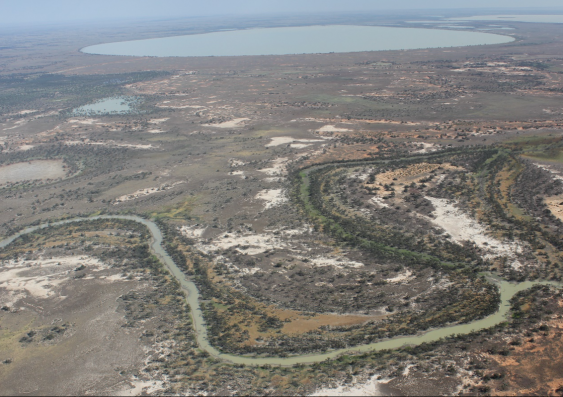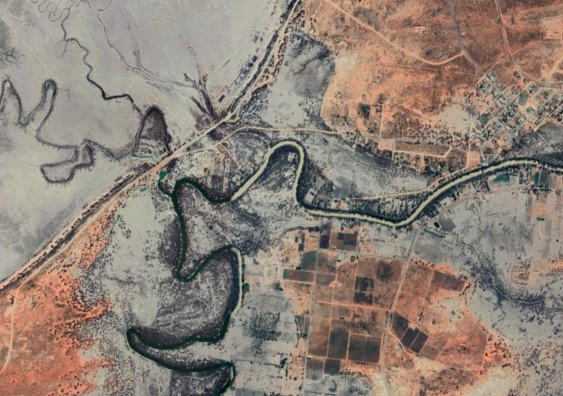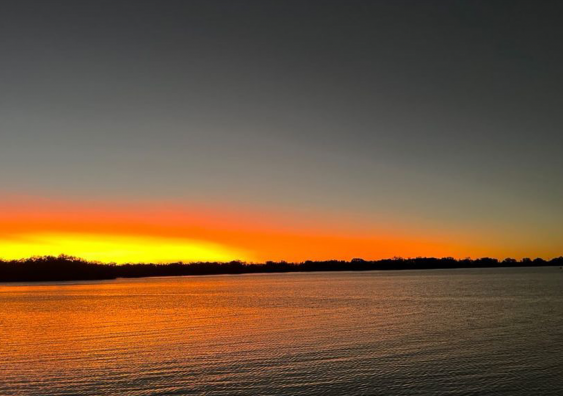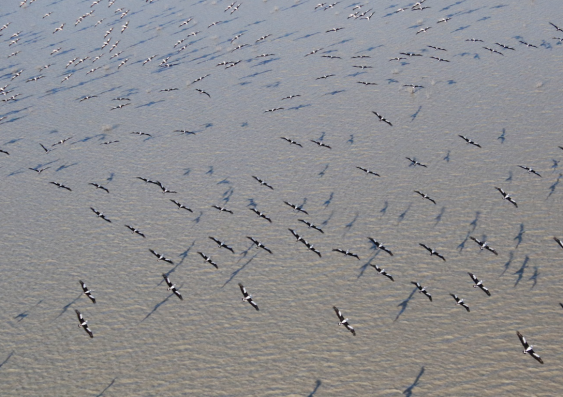Menindee Lakes water savings project: study shows poor government consultation and decision-making
A controversial project in the Murray-Darling Basin was ‘misguided and poorly framed’, UNSW scientists say.
A controversial project in the Murray-Darling Basin was ‘misguided and poorly framed’, UNSW scientists say.

Isabelle Dubach
Media and Content Manager
+61 432 307 244
i.dubach@unsw.edu.au
A study led by researchers at the Centre for Ecosystem Science at UNSW Sydney has examined a large water-savings project at Menindee Lakes in New South Wales.
The Menindee Lakes are part of the Murray-Darling Basin – the largest basin in Australia, spanning one-seventh of the continent. 2.2 million people live across its area, and its surface water supplies about 40 per cent of Australia’s irrigated agricultural output.
“The Menindee Lakes project is among the key mechanisms devised by governments to deliver on the Murray-Darling Basin Plan – a major inter-government initiative to provide water for rivers and wetlands in the basin,” said UNSW Professor Richard Kingsford, Director of the Centre for Ecosystem Science and co-author of the study.
The $151.8 million project’s goal is to save water for the Basin Plan by implementing infrastructure measures and rule changes to reduce water lost to evaporation from Menindee Lakes.
“We were really keen to not only analyse the consultation and decision-making processes that led to this project but also to make recommendations for its future,” Prof. Kingsford said.
The paper in international scientific journal Ecology and Society and its accompanying report found that the NSW Government project to alter the Menindee Lakes lacked rigorous evidence and community consultation.

The town of Menindee on the Darling River (population ~550), where it feeds into Lake Menindee. Photo: Google Earth 2022
Prof. Kingsford said the study showed the project had been misguided and poorly framed from the start.
“We identified project failures, particularly lack of transparent explanation of how this water could be ‘saved’, and inadequate consultation with local communities, including Traditional Owners,” Prof. Kingsford said.
“This is another good example of governments looking for a simple engineering solution to a complex problem.
“There were real opportunities for a win-win here whereby some water could be recovered, albeit a lot less than suggested, and the lakes could be better restored.”
The Menindee Lakes is a major wetland system in the Murray-Darling Basin supplied by the Darling River, known also by its Barkandji name, the Barka River. It was once a system of natural lakes – some were made into water storage dams in the 1960s, historically supplying water to Broken Hill.
Despite current widespread flooding, the Barka/Darling and Menindee Lakes have experienced long-term ecological decline, including a series of catastrophic fish kills in 2019 and 2020, which also affected the lower Barka/Darling River and South Australia. Their management has become a priority for water recovery efforts in the Murray-Darling Basin through the Menindee Lakes Water Savings Project.
Prof. Kingsford said the project had been problematic since its inception.
“Basically, governments were in such a hurry to find an engineering solution to water savings for the Basin Plan, they just rolled out the Menindee Lakes project which had been on the NSW water agency’s books for more than 20 years. It is a classic case of robbing Peter, the Menindee Lakes environment, to pay Paul, the environment in the rest of the basin,” he said.

Sunset taken from Sunset Strip, a ‘beachside’ community on the north shore of Menindee Lake, a culturally significant part of the lakes that attracts local tourism. Photo: J. M. Craciun
UNSW Science PhD candidate Zoe Ford, who led the research, said, “There was little rigorous evidence or modelling made publicly available to explain how water savings would be achieved by the project, which has a significant financial cost to taxpayers of $151.8 million.”
The Menindee Lakes project aimed to deliver water savings for the 2750 gigalitre environmental flow target under the Basin Plans. Previously published reports found by researchers on the quantity of water savings to be achieved by the project were unclear, with three different estimates provided (72, 106, 116GL) – all falling below the original estimate of 180GL expected by the Australian Government.
“More concerningly, these proposed water savings made up a substantial proportion – up to 25 per cent – of the additional 450 gigalitre of water to be recovered for the environment through efficiency measures,” Ford said.
“That’s a worry because the government was trying to maximise the amount of water out of Menindee to deliver on a policy commitment for the whole basin, ensuring pressure from state and the Australian governments on the Menindee Project was ratcheted up.”
The researchers found of all the information used by WaterNSW in the Menindee Lakes primary planning document, there was only one source (4 per cent) that was peer-reviewed. More alarmingly, a large proportion (41 per cent) of relevant, freely available, independent and peer-reviewed information was not used.
“It makes a mockery of using the best available scientific evidence for making decisions on water under the Murray-Darling Basin Plan,” Prof. Kingsford said.
“Also, there were no publicly available data or associated modelling to explain exactly how the project would achieve the three different water savings estimates proposed for the project.”
The researchers also consulted about the experiences of local people, Traditional Owners, local residents and local farmers regarding the Menindee Lakes and its importance, including environmental values, examining the government consultation process.
Co-author Professor Sue Jackson from the Australian Rivers Institute and Griffith University is an expert in water governance. She criticised the poor consultation.
“The NSW government approached this issue as if it already had the solution and was just going through a tick the box exercise with the local community, irrespective of local and scientific evidence.”

Australian pelicans at Menindee Lakes (an important waterbird breeding site) captured during the annual Eastern Australian Aerial Waterbird Survey. Photo: Richard Kingsford
The study also investigated the long-term ecological state of Menindee Lakes, finding considerable evidence of degradation, resulting from reduced flows upstream contributing to the declining waterbird numbers on the lakes.
“It would have made sense to tell the public about the ecological decline, particularly given that Kinchega National Park makes up such a substantial part of Menindee Lakes. There could have then been a focus on what to do about it,” Prof. Kingsford said.
As of October 2021, plans for the project are to be rescoped and its completion have been delayed by the NSW government because of ‘unique sensitivities’.
“As such it cannot be delivered in its current form by 2024,” Prof. Kingsford said.
“There is a great opportunity to reimagine this project as an ecological and cultural restoration project for Menindee Lakes. Bring in the ecological expertise of government, which was, sadly, hardly consulted, and work with the community to maximise what can be done with the water in Menindee Lakes. The goal should be to restore this wonderful ecosystem and associated cultural practices.”